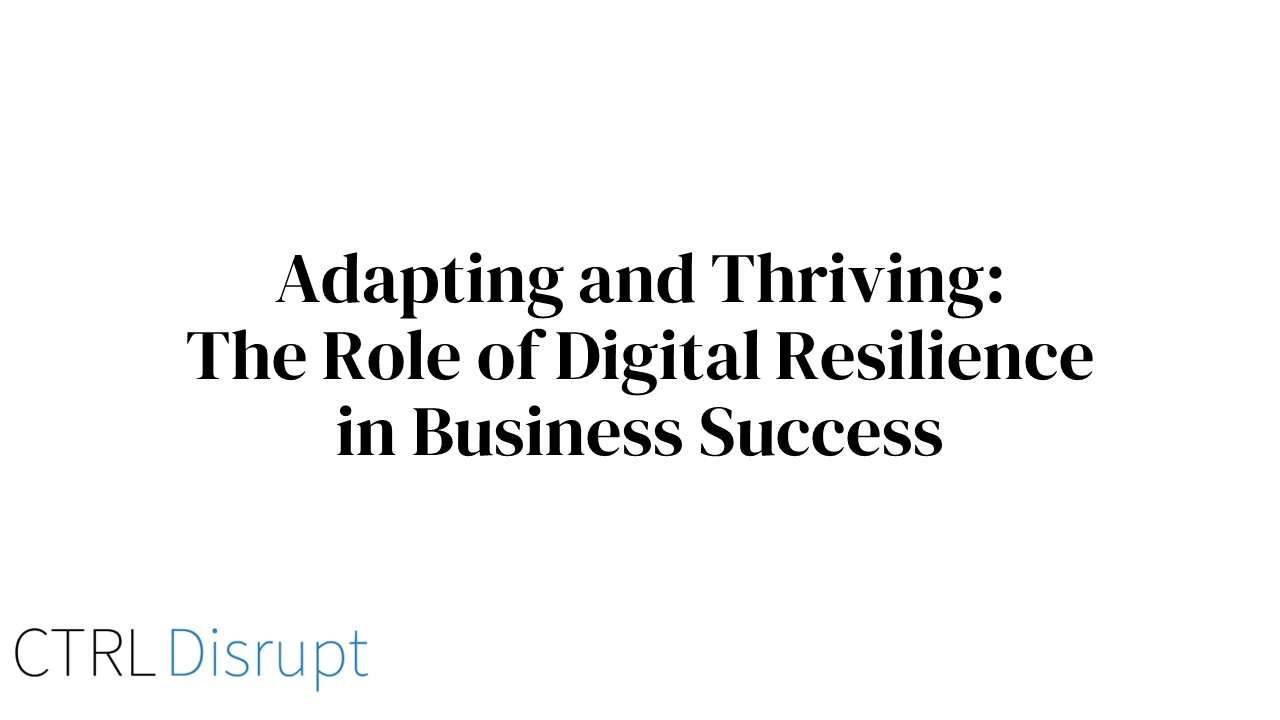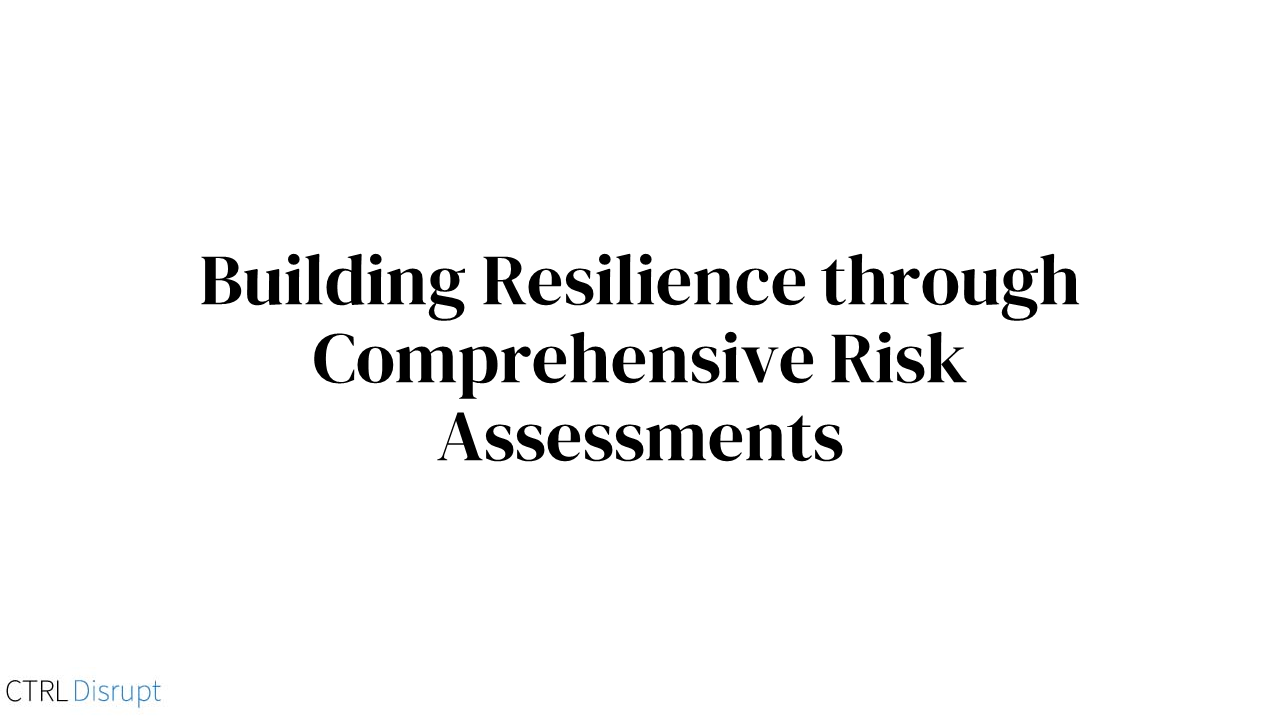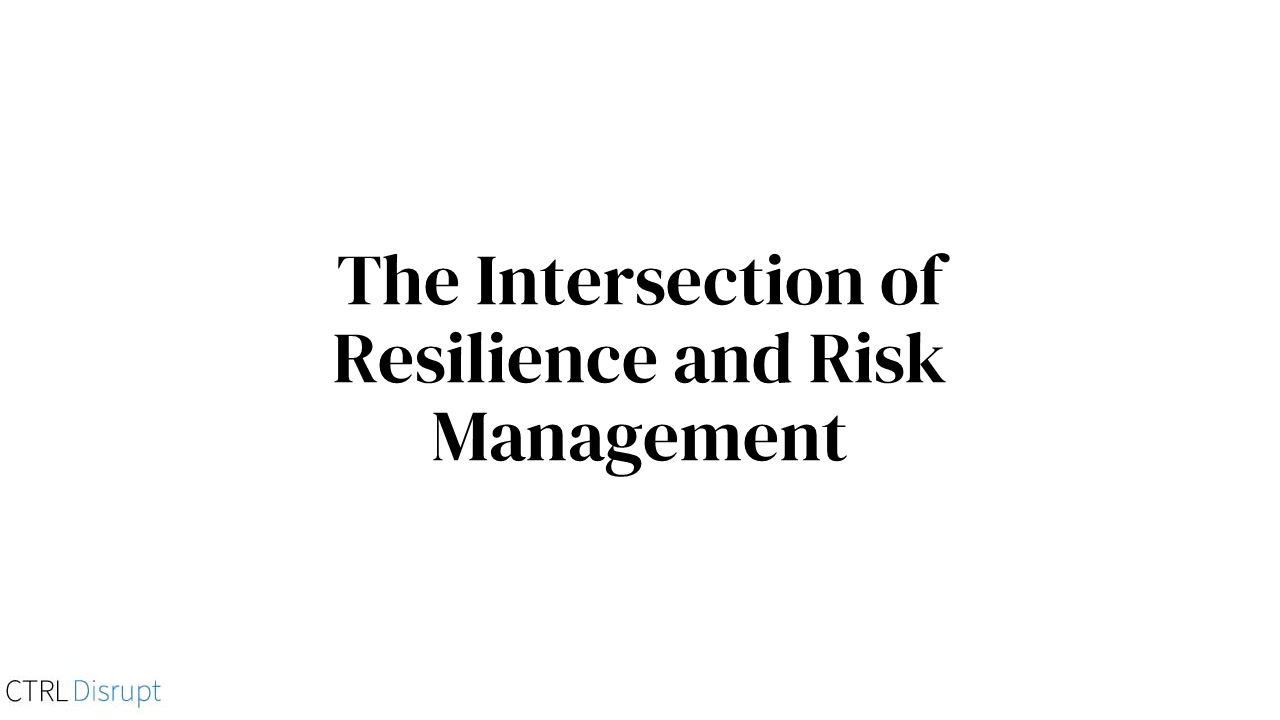Why IT Security is Ineffective Without Proper Business-IT Alignment: The Path to Digital Resilience
Introduction
In today's interconnected world, the digital realm stands as a backbone for most businesses. It's no longer a question of if companies should integrate IT security, but how effectively they do it. However, while robust IT security is essential, it alone isn't the panacea for the myriad challenges enterprises face. At the heart of a truly resilient digital strategy lies the alignment between IT and business objectives—a factor that, when overlooked, can lead to an illusion of security. Simply put, when an enterprise's IT is fortified yet misaligned with its core business objectives, it risks "failing securely." This article delves into the pivotal role of Business-IT alignment in sculpting a resilient digital landscape, underpinned by effective risk management.
The Importance of Business-IT Alignment
Business-IT alignment isn't just another corporate buzzword; it's the keystone of a company's digital resilience. But what does it truly mean? At its core, Business-IT alignment revolves around ensuring that IT strategies, goals, and operations are not only in sync with but actively support an enterprise's overarching business objectives. It's about harmonizing two worlds—often seen in silos—for the creation of a cohesive, agile, and adaptable business model.
In an era where technological disruptions are frequent, the companies that soar are those where the IT department isn't just seen as a support function but as an active partner in driving business strategy. The value is undeniable. Aligned businesses can anticipate market shifts, pivot their strategies swiftly, and harness the power of their IT infrastructure to drive tangible business outcomes.
By recognizing and prioritizing this alignment, companies pave the way for digital resilience, ensuring they are not only safeguarded against threats but are primed to capitalize on digital opportunities.
The Risk of Misaligned IT Strategy: Failing Securely
When IT and business strategies diverge, it doesn't just cause inefficiencies or missed opportunities—it can lead to a dangerous misconception: the illusion of security. Here's how a misaligned IT can jeopardize an enterprise, even with the most robust security measures in place.
- The Mirage of Secure Operations
Imagine a fortress: impenetrable walls, state-of-the-art security systems, and vigilant guards. Yet, if this fortress was built in the wrong location or for the wrong reasons, all its security becomes irrelevant. Similarly, an IT system can be technically secure but entirely misaligned with business needs, making its security measures counterproductive.
- Digital Resilience ≠ Mere Security
Resilience goes beyond mere protection. It's about agility, adaptability, and ensuring that systems can weather disruptions while still delivering value. An isolated IT system might be secure from threats but lacks resilience if it cannot adapt to the ever-changing business landscape.
- Missed Red Flags and Hidden Vulnerabilities
When IT doesn't mirror business priorities, certain risks might go unnoticed. Critical business data might be left vulnerable, while less pertinent data is heavily guarded. Misalignment can lead to a skewed risk perception and misallocated resources.
- Wasted Resources on Irrelevant Threats
Misalignment can also result in a disproportionate focus on threats that aren't relevant to the business's core operations. Resources could be spent guarding against potential IT threats while ignoring the genuine risks that could impact the business's bottom line.
- Stifling Innovation with Overbearing Security
In an attempt to "secure everything," a misaligned IT can impose restrictions that stifle innovation. When security measures don't consider the business's strategic goals, they can hinder growth and agility, becoming obstacles rather than enablers.
In essence, without proper Business-IT alignment, organizations risk "failing securely." They might have fortified defenses, but if these defenses don't align with business needs and objectives, they can do more harm than good. The ultimate aim should always be to align security measures with business strategies, ensuring that they protect, enable, and enhance the organization's mission and vision.
Digital Resilience: The Ultimate Goal
In the age of digital transformation, organizations find themselves navigating both unprecedented opportunities and challenges. One concept that emerges at the forefront of this digital age is digital resilience. But what is it, and how does Business-IT alignment bolster its foundation?
Digital resilience transcends the mere robustness of IT systems. It embodies an organization's capacity to consistently deliver its core services even when faced with digital threats and disruptions. At its core, digital resilience encapsulates preparedness, adaptability, and a forward-thinking mindset to handle potential threats, safeguarding business continuity and upholding stakeholder trust.
The harmonization of business strategies with IT capabilities forms a pivotal pillar of this resilience. When business and IT walk hand-in-hand, the organization can adeptly anticipate potential digital disruptions, tailoring strategic responses. This alignment grants businesses a degree of agility that permits rapid adaptation to market shifts and tech advancements, thereby establishing a competitive edge. Furthermore, with IT mirroring the priorities of the business, pivotal processes and data are shielded effectively, ensuring an unbroken chain of value delivery.
Meanwhile, risk management acts as the compass guiding the ship of resilience through the vast digital seas. The interplay between digital resilience and risk management is intricate. While resilience focuses on adaptability and continuity, risk management offers the insights and tools necessary for safe digital navigation. Through effective risk management, organizations can pinpoint looming threats, allocating resources astutely and giving precedence to risks that might critically skew business objectives. This proactive stance means organizations are not caught off-guard; they can see disruptions on the horizon and have countermeasures primed. And given the fluidity of the digital realm, with its ever-shifting challenges, periodic risk assessments ensure that strategies for resilience remain attuned and effective.
Digital resilience transcends being just a defensive tactic; it has become an integral facet of modern organizational DNA. Achieving such resilience necessitates more than adopting the latest technologies. It demands a harmonious alignment of business ambitions with IT capabilities, anchored firmly by proactive risk management. This cohesion ensures that organizations remain agile, aptly equipped to navigate digital disruptions while seizing emerging opportunities effectively.
Key Components of Business-IT Alignment for Digital Resilience
In the symphony of enterprise success, both the business and IT sectors must play harmoniously. Their alignment is the cornerstone of building digital resilience. However, to ensure this alignment remains optimal and evolves with the times, organizations must focus on several pivotal components:
- Strategic Planning and Communication
It's crucial to remember that IT isn't just about technology; it's about enabling the business to achieve its strategic goals. Effective communication between IT leaders and business stakeholders becomes the bridge. By consistently collaborating, setting clear expectations, and mapping out technology's role in realizing business objectives, an organization creates a unified vision. It's this shared vision that can guide the enterprise, ensuring that every IT investment or initiative directly corresponds to a tangible business benefit. - Regular Reviews and Adjustments
The business landscape is not static; it shifts based on market dynamics, competition, and consumer preferences. Similarly, technological advancements are perpetual. The alignment of business and IT, therefore, can't be a one-time task. Regular check-ins are imperative to assess the continuing relevance of IT initiatives. By periodically reviewing and adjusting the strategy, businesses can ensure that their IT deployments remain agile and beneficial, even amidst change. - Prioritizing IT Initiatives That Directly Support Business Goals
Every technological advancement or tool might seem tempting, but not all are relevant to a particular business's unique objectives. Rather than chasing every new IT trend, organizations must critically evaluate and prioritize those initiatives that directly bolster their business goals. It's about quality over quantity. By focusing on purpose-driven technology deployments, businesses can achieve more with less, ensuring that every digital effort is meaningful and contributes to fortifying digital resilience.
Incorporating these components into the DNA of an organization's operations can pave the way for a robust digital resilience framework. Not only does this alignment protect the company, but it also propels it forward, ensuring that every technological endeavor is a step towards tangible business success.
Challenges to Achieving Business-IT Alignment
Achieving seamless alignment between business and IT is not without its hurdles. It's a journey that demands consistent effort, understanding, and flexibility. Several challenges can emerge in this pursuit, some of which are intrinsic to the nature of these departments, while others arise due to external pressures and changes. Addressing these challenges head-on is essential for forging a path towards digital resilience.
- Cultural Differences Between Business and IT Departments
At the core, business and IT professionals often come from different academic and training backgrounds, leading to distinct ways of thinking, problem-solving, and approaching challenges. Business teams might be driven by market dynamics, customer needs, and profit margins, while IT teams are more inclined towards technological efficacy, scalability, and security. These differing perspectives can sometimes lead to clashes or misalignment if not addressed with mutual respect and understanding. - Rapidly Changing Technological Landscape
The velocity at which technology evolves can be dizzying. New platforms, tools, and methodologies emerge almost daily, promising efficiency and innovation. For businesses, this can be a double-edged sword. On one side, it offers opportunities for growth and differentiation, but on the other, it poses the risk of constantly feeling the need to catch up, potentially leading to hasty and misaligned IT decisions. - Misunderstandings or Lack of Clear Communication
A robust alignment is founded on clear and consistent communication. However, sometimes there's a disconnect between what the business side envisions and what the IT side interprets. This gap can lead to projects that don't meet expectations, wastage of resources, or missed opportunities. It's essential that both sides invest time in regularly syncing up, clarifying objectives, and ensuring they're on the same page.
Addressing these challenges isn't just about troubleshooting; it's about creating a collaborative environment where business and IT not only coexist but thrive together. When these barriers are acknowledged and actively addressed, they pave the way for a resilient organization that's well-equipped to handle the uncertainties of the digital era.
The Road Ahead: Steps to Ensure Business-IT Alignment
The journey to optimal Business-IT alignment is an ongoing process, requiring persistence, adaptability, and a shared vision. As businesses continue to evolve and the role of technology becomes even more intrinsic to organizational success, the need for a harmonized approach becomes paramount. Here's a look at some proactive steps that organizations can adopt to foster and maintain this essential alignment:
- Regular Dialogues and Meetings Between IT and Business Leaders
Open channels of communication form the bedrock of alignment. By regularly convening, both teams can stay updated on each other's goals, challenges, and priorities. These meetings shouldn’t just be status updates but also forums for brainstorming, feedback, and joint strategic planning. Such interactions ensure that decisions are made with a holistic view of the organization's objectives. - Training and Workshops to Bridge Knowledge Gaps
One of the root causes of misalignment is a lack of understanding of each other's domains. Organizing joint training sessions and workshops can help bridge this knowledge chasm. When the business side gains a better appreciation for technological constraints and possibilities, and the IT side comprehends business imperatives more deeply, it paves the way for more informed and synergistic decision-making. - Investing in Tools and Processes That Enhance Collaboration
In today’s dynamic environment, relying solely on sporadic meetings is not enough. Investing in collaborative tools—be it project management software, unified communication platforms, or real-time documentation solutions—can play a pivotal role. These tools not only streamline workflows but also ensure that both teams are always in sync, enhancing responsiveness and efficiency.
Achieving Business-IT alignment isn't a one-time milestone but a continuous endeavor. As both fields are always in flux, staying aligned requires ongoing effort and commitment. Yet, by incorporating these proactive measures and fostering a culture of collaboration and mutual respect, organizations can build a resilient foundation that not only addresses current challenges but is also primed for future opportunities and innovations.
Conclusion
In the evolving tapestry of the digital era, Business-IT alignment emerges as an indispensable thread that binds an organization's digital strategy, ensuring its resilience against a backdrop of uncertainties and threats. While the technological landscape constantly shifts, presenting both opportunities and challenges, the essence of Business-IT alignment remains steadfast: to ensure that IT strategies, initiatives, and operations are intrinsically linked with the overarching business objectives. A failure to recognize this alignment can create a chasm, leading to a mere illusion of security, inefficiencies, and missed prospects. On the other hand, embracing this alignment guarantees that organizations not only remain safeguarded but also thrive, adapting nimbly to disruptions, capturing emerging opportunities, and delivering consistent value. Beyond the realm of mere defense, Business-IT alignment accentuates the proactive role IT plays in sculpting an organization's future, reinforcing that in this interconnected world, true digital resilience is achieved when IT and business march forward, hand in hand.

 By
By


